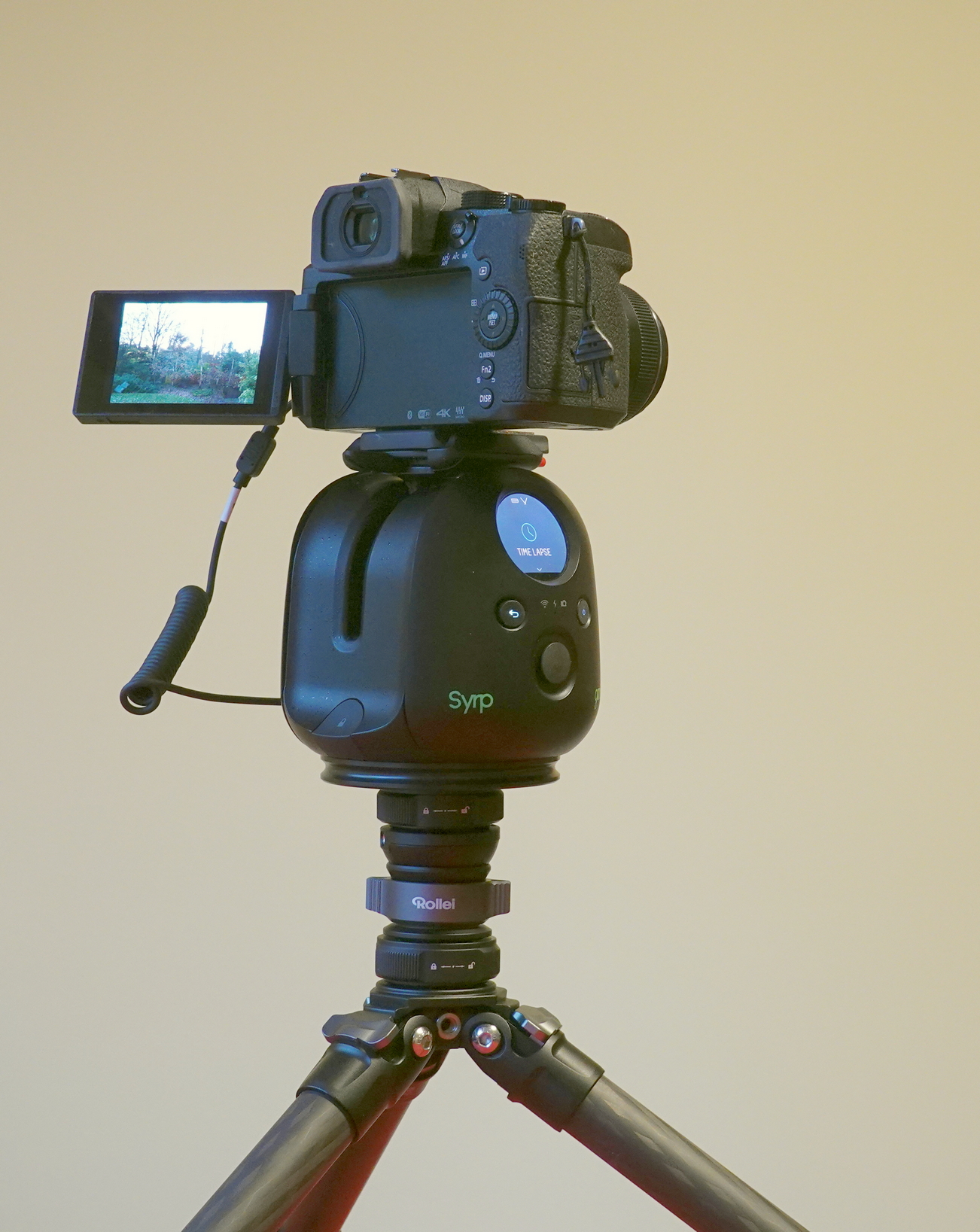I have been taking high-resolution panoramas for many years, and in recent years have been testing and using a number of motorised tripod heads for this. Please see the multi-row panoramas page for the reasons for using a motorised head along with details of ones I have used.
This page provides some background and information about the Syrp Genie II », together with my checklist which might prove a useful starting point for a new setup.
The Syrp Genie II was developed by Syrp Lab (New Zealand) and is now marketed by Manfrotto. It is a well-specified pan-tilt motorised head with a very good phone app for control. Support from Manfrotto is patchy, in my experience, and some spare parts can only be purchased from third parties. In particular, it uses a unique 46mm camera plate and a unique battery (the latter is a very nice design than can be inserted either way up).
However, the Genie II is simpler and quicker to set up and use than the Benro Polaris while being almost exactly the same weight (1.44kg). Like the AZ-GTi and the GigaPan, the app only fires the shutter; information cannot be read from the camera.
Syrp Genie II
In 2024 I discovered the Syrp Genie II motorised head (2-axis, 1.44kg), which is available new (or used, at a lower price). It is more robust than some earlier heads Iíve used (such as the GigaPan Epic 100). Unlike other heads it has a built-in display and joystick which allow manual control as well as displaying battery level, etc.
There is also an app which can be used to control the head with Live (remote) control, Time lapse, multi-row Panorama, and other options. Its Panorama option allows repeat panoramas which is especially useful.
The head can be attached directly to a tripod; I prefer to use Leofoto 45mm QuickLink sockets and plates to avoid having to rotate the head onto the tripod screw; I also use a levelling base between the tripod and the head which simplifies setup on rough ground (again using QuickLinks).
The top of the head has a Syrp clamp with a 46mm plate which is unusually fast to clamp or detach but is unique to Syrp. The plate can be screwed directly to the camera, or one can screw the plate to an Arca-Swiss clamp for more options. I bought a second plate (still available in Europe) as a spare and for this purpose.
I have put together a ‘medium light’ panorama kit based on the Syrp Genie II, a Lumix G90 camera, and the Lumix 45–175mm PowerZoom lens. Together with a 3-section tripod, connectors, spare battery, etc., the kit weighs 3.4kg (excluding bag), almost half of which is the head (component details are here).
The Lumix G90 has an articulated screen which allows using the tripod at a lower height for better stability: a column extender can be used (I use QuickLinks for speed and flexibility) if extra height is desired. The Lumix 45–175 PowerZoom lens is particularly suitable for multi-row panoramas as it is very light and its current zoom length (mm) is shown on the camera screen as it is adjusted – so that length is easily entered into the Syrp app.
The Syrp head connects to the camera via a 2.5mm shutter cable. (Versions are available for most cameras with a remote cable; the Lumix cameras use an ‘L1’ cable.)
In summary: with a decent tripod, a camera that supports a remote control wired connection, a good lens, and a motorised head like the one described, you can create better-quality and/or higher-resolution images of static subjects than the camera and lens are capable of on their own.
The pages and data here are for non-commercial use only. All content © Mike Cowlishaw, 1963, 2025. All rights reserved. Please see http://speleotrove.com/mfc/ » for contact details.
Privacy policy: the Speleotrove » website records no personal information and sets no ‘cookies’. However, statistics, etc. might be recorded by the web hosting service.
This page was last edited on 2025-04-01 by mfc.

